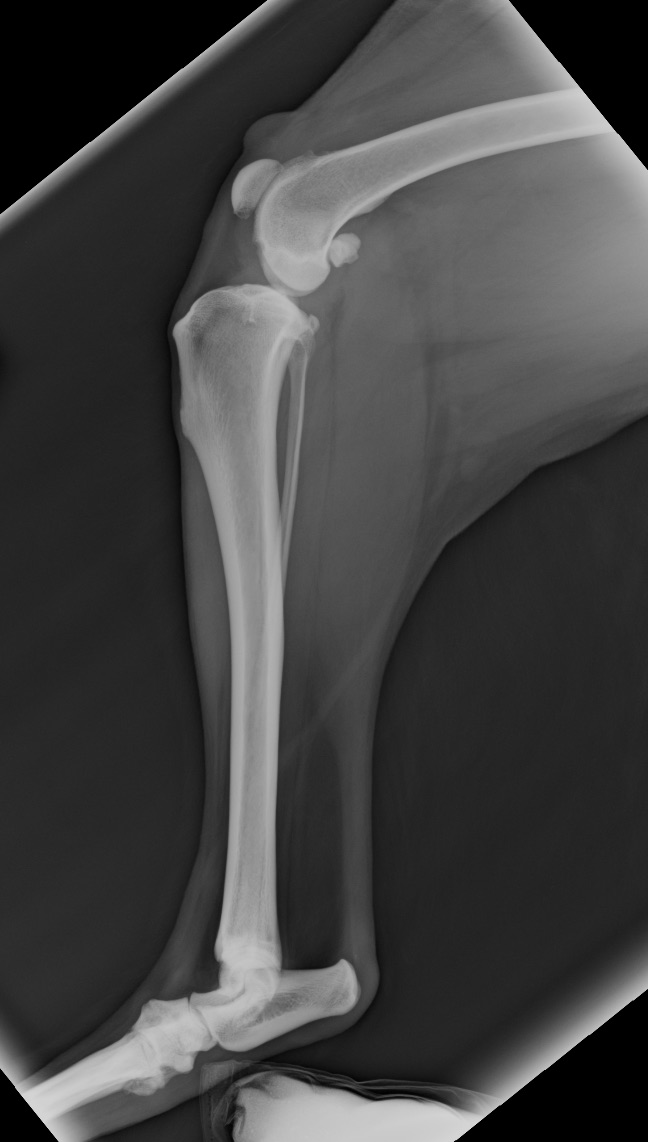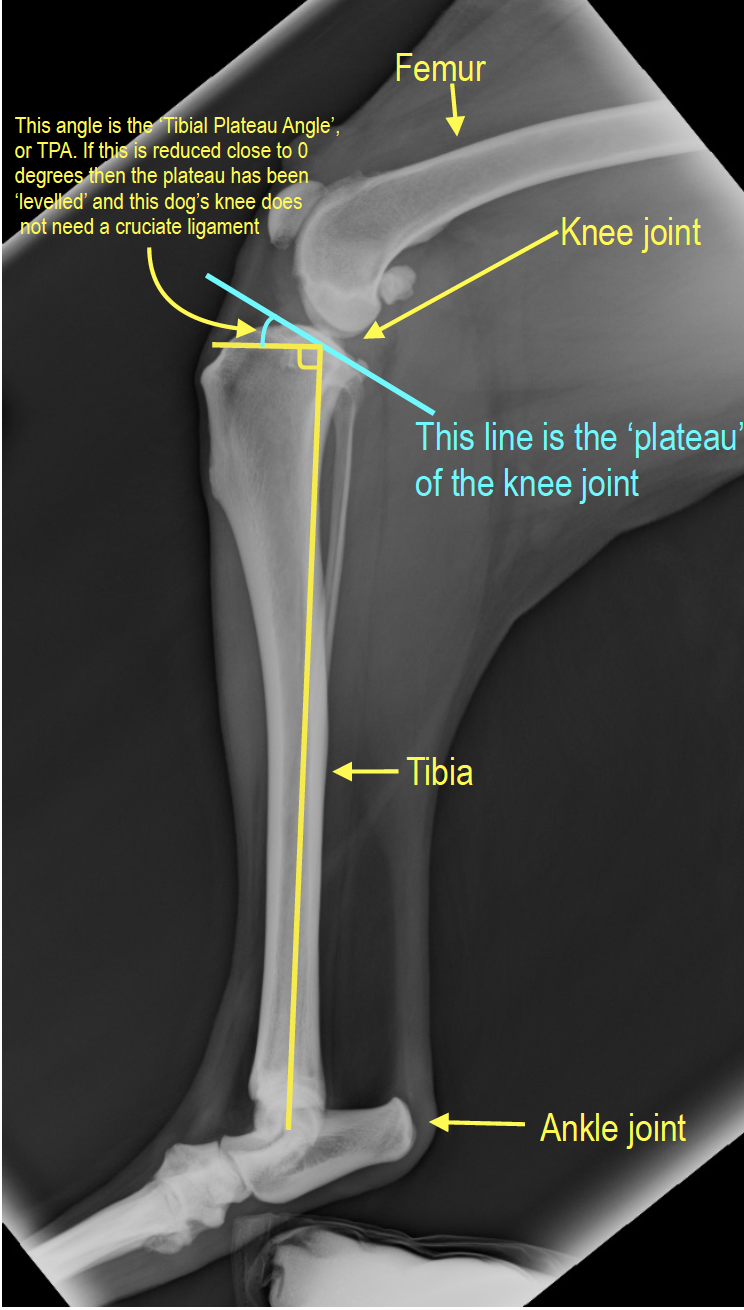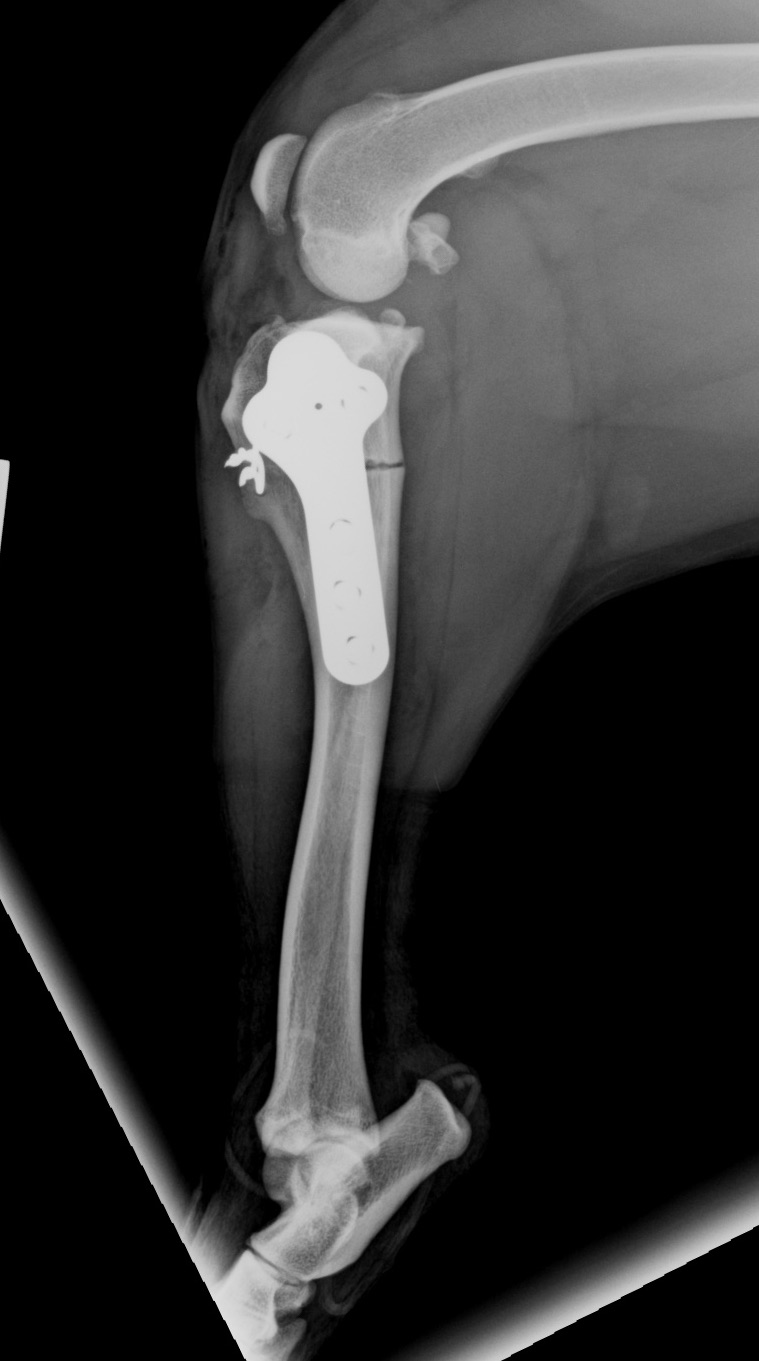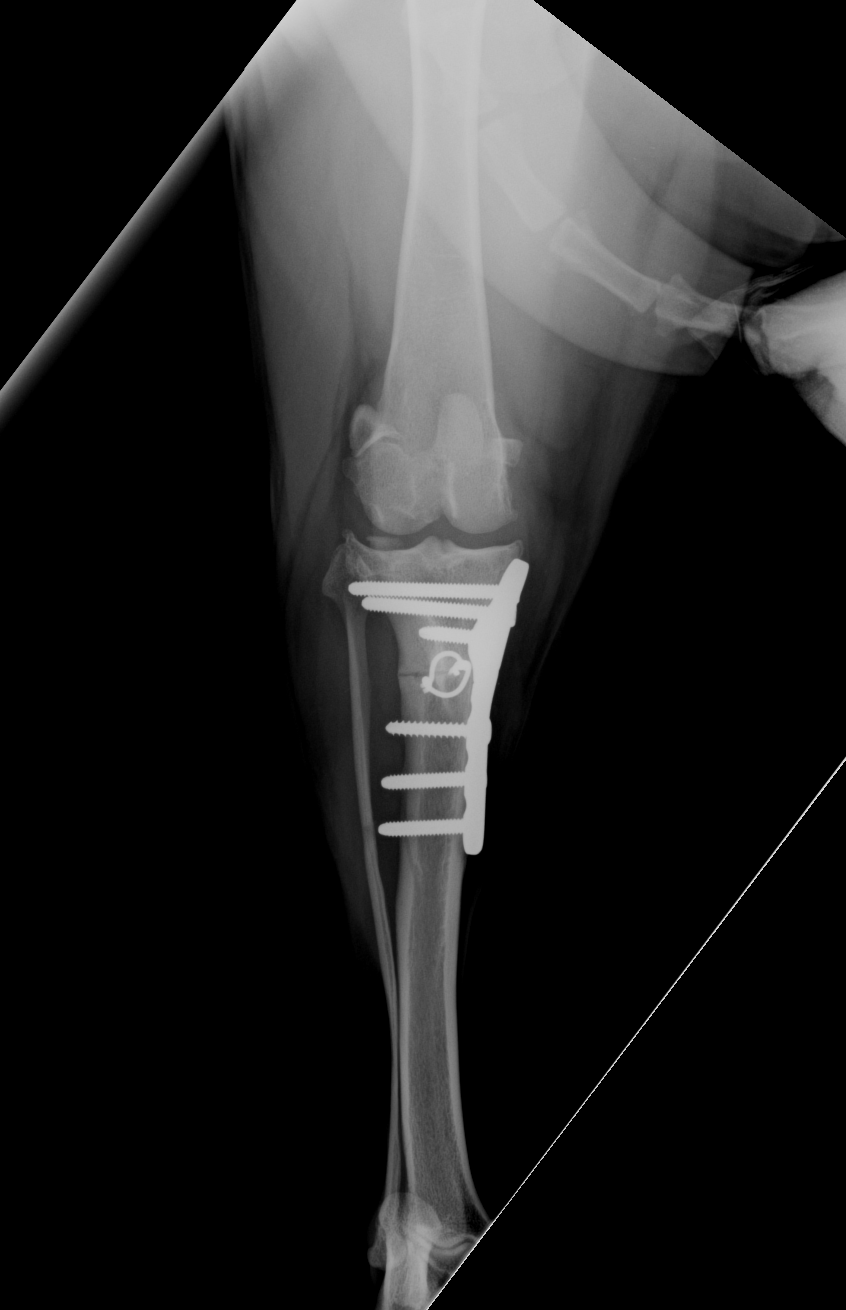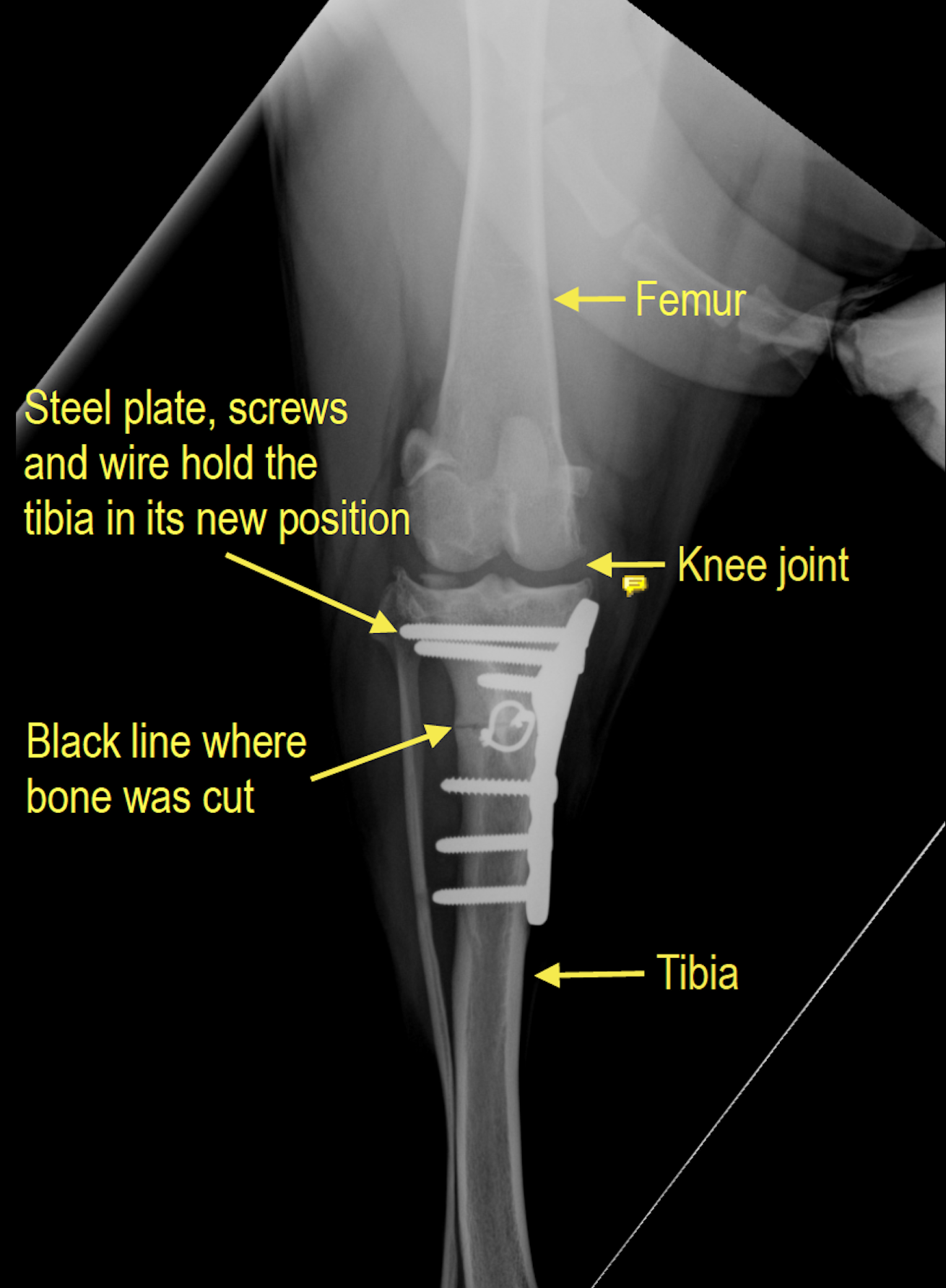Cruciate rupture, disease or tear is the commonest form of lameness in the hind leg of a dog. If your dog has been diagnosed with this problem then it can be confusing and overwhelming.
We see a lot of cruciate cases here at Kelperland Surgical Referrals and hopefully this page will help. If your dog has a cruciate problem and you want some advice then do get in touch.
Simon is happy to see cruciate cases for a free initial consult, to examine your dog, and advise you on the best course of treatment with no obligation to have it here. Just contact us and (unless Simon is away) you will be able to get an appointment within a week.
What is the cruciate ligament?
The cruciate ligament is a very important ligament which sits in the middle of a dog’s knee joint, holding the bones around the joint together when the dog puts his foot down. When that ligament becomes diseased, weakens, or simply snaps it causes the bones around the knee joint to ‘wobble’ around when the foot is put down – this ‘instability’ means the dog cannot use that leg normally and becomes lame.
The lameness seen can range from severe (i.e. can’t put the foot down at all), to mild (only showing a slight limp on running). The joint will swell up causing significant pain. If this problem goes untreated it is most likely to lead to long standing pain, lameness and then severe arthritis in later life.
A knee joint without a functional cruciate ligament becomes unstable and this can be diagnosed on the animal by feeling the knee, especially when they are sedated and all their leg muscles are relaxed.
In this video, you can see the leg is ‘wobbling around’ as I’m manoeuvring it, and it shouldn’t. The dog’s other knee is completely stable as you can see I can move the bones around that knee at all. This movement is called cranial drawer and is one of the ways that we diagnose cruciate problems in dogs.
It is a condition that can affect dogs of any age. The main issue is that when the ligament weakens or snaps it frays (just like when a cut rope frays at the edges) which means it cannot simply be stitched back together – the stitch doesn’t hold and the knee would remain unstable.
This fact means that the veterinary profession has taken years and years to work out surgical solutions for this problem. Thankfully we now know what works best – it is generally regarded that cutting and moving the shin bone (tibia) is the best form of technique. These surgeries are called osteotomies and come in various shapes and sizes. The goal of all of them is to change the shape of the dog’s knee in such a way that it doesn’t need a cruciate ligament at all.
Here at KSR we perform the ‘wedge’ TPLO version – which stands for Tibial Plateau Levelling Osteotomy – which basically means that we ‘flatten-off’ the top of the shin bone. This is achieved by cutting the shin bone and removing a triangular ‘wedge’ of bone from it – this wedge is measured out accurately according to the dog’s measurements on pre-operative Xrays. The wedge of bone is removed and the two remaining bits of the shin bone are compressed together – this changes the angle of the top of the shin bone within the knee. The bone is fixed in this position with a large stainless steel ‘plate’ and screws that fix it in position.
A Closer Look
We find that TPLO works very well in dogs of all shapes and sizes. It is the technique of choice here for all cruciate cases.
The post-operative period is very important and strict instructions will be given about resting your dog after surgery. Simon will guide you through this process and check in with you regularly to ensure everything is progressing as planned.
The rehab period is 12 weeks in total but we find that in the second 6 weeks of this time your dog will be walking pretty normally and for a reasonable time, just restricted to on-lead exercise only. Sometimes we Xray cruciate cases post-operatively and if we do so the cost of this is included in the initial surgery fee.
The cost for a TPLO including aftercare appointments at KSR is £3,750. If your dog has a cruciate problem then you are welcome to contact us to book a free appointment with Simon. He can examine your dog and advise on the best course of treatment with no obligation to have it here.
We appreciate that TPLO surgery is costly and we do offer an alternative – this surgery is called a ‘lateral tibio-fabella suture.’ This surgery involves literally stitching the femur (thigh bone) to the tibia (shin bone) to stop them from being unstable when the cruciate ligament (which holds them together) is damaged. This is a much older surgical technique but does work in some cases – mainly smaller, more sedate dogs. The surgery is shorter and less technical, so the price is cheaper: £2,000. The main problem with this technique is that if the stitch breaks (which does happen sometimes) then we tumble right back to the start – the joint remains unstable and your dog will still be painful and lame. At that point, your main option would be to perform a TPLO afterall. It is for this reason that we mainly recommend TPLO in the first instance, but this can all be discussed at your initial appointment with Simon.

